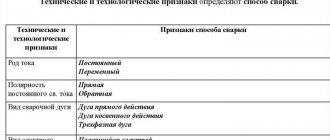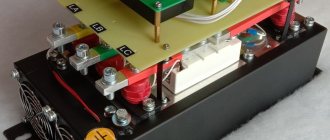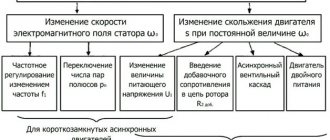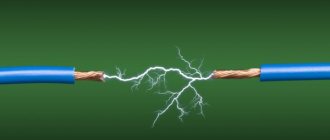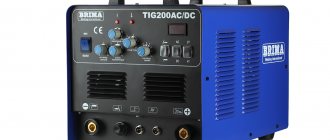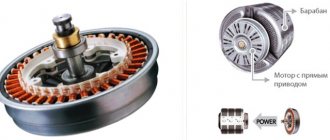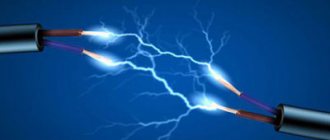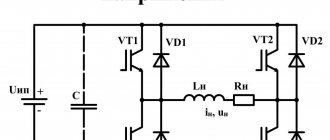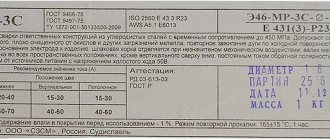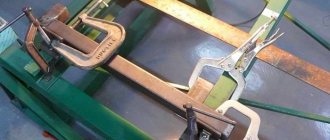The modern market offers many types of electrodes for performing various welding jobs. Many of them are divided by the type of current used, which is very convenient for both manufacturers and craftsmen. Therefore, most welders use DC and AC electrodes. In this article we will tell you in detail which electrodes are better for welding using alternating current and how DC electrodes differ from alternating current electrodes.
Where is AC used?
Alternating current, alternating voltage or, as it is often called, simply “change” is widely used both in amateur welding in the garage and in the assembly of complex metal structures in a factory. Devices with “change” have gained popularity due to their affordable price and ease of operation. Therefore, many novice and experienced welders have at least one AC welder in their arsenal.
To work, a welder needs not only a machine, but also consumables, in particular electrodes. Many novice welders have a question: “What are the differences between electrodes for alternating and direct current?” We answer: AC electrodes differ from DC electrodes in that you can use them without fear when welding with any current, but “constant” electrodes are prohibited from using alternating voltage. Therefore, electrodes for alternating current and high-quality welding can be called universal, which is a big advantage. What other pros and cons do this type of electrode have?
Basic modes
It will be possible to achieve a good result when welding in any spatial position by setting the correct modes depending on the thickness of the metal.
| Diameter size, mm | Welding current range, A | ||
| Down position | Vertical seam | Ceiling seam | |
| 2 | 40 – 80 | 40 – 60 | 50 – 70 |
| 2,5 | 60 – 120 | 60 – 95 | 60 – 100 |
| 3 | 75 – 150 | 75 – 140 | 75 – 170 |
| 4 | 110 – 220 | 110 – 210 | 100 – 190 |
| 5 | 160 – 310 | 150 – 290 | 150 – 280 |
Advantages and disadvantages of electrodes for alternating current
Speaking about the advantages, we should also mention the excellent protective properties of such electrodes: they protect the weld pool well from the negative effects of the atmosphere. Also, when working with a transformer, you do not need to use a rectifier.
But despite this, AC welding electrodes have their drawbacks. They are inferior to materials for constant tension in the quality of the resulting seam, contribute to the active spattering of metal and poorly absorb energy from mechanical loads, which is why they are less durable.
Flaws
- Electrodes for AC welding are inferior in connection quality;
- They exhibit high metal spattering and uneven seam formation;
- They have relatively low impact strength.
Physico-chemical composition
DC and AC electrodes may have significant differences in their composition if they are intended for different types of metal, but for the same ones they can be very similar. There are often small differences of tenths of a percent.
| Item name | Content in composition, % |
| Carbon | 0,08 |
| Silicon | 0,3 |
| Manganese | 0,4 |
| Phosphorus | 0,025 |
| Sulfur | 0,03 |
Specifications
These characteristics are the main ones that guide specialists when choosing. They are determined by the composition, coating and other parameters of the surfacing material. After all, to make the right choice, you need to know what the temporary tensile strength of the electrodes is, and so on. Using the example of the technical characteristics of the OK-46 electrode, you can find out the basic data that this type has.
| Relative extension, % | 28 |
| Impact strength, J/cm squared | 140 |
| Test temperature, degrees Celsius | +20 |
| Tensile strength, N\mm squared | 510 |
| Maximum bend angle of the weld, degrees | 150 |
| Relative yield of deposited metal, % | 96 |
| Weight of electrodes for 1 kg of seam, kg | 1,7 |
Stamps
Many of the brands that are designed for alternating current are also well suited for working with direct current, both with direct and reverse polarity. It is for this reason that their choice may seem wider, and some repetitions with materials for other types of current will also be noticeable. The following brands are very common:
- ANO-4;
- ANO-6;
- ANO-21;
- MP-3;
- OZS-4;
- OZS-6;
- OZS-12.
Designation and marking
In the marking, the type of electricity is indicated by the last digit. But taking into account the fact that there is a selection here not only in variants with alternating or direct current, but many brands of electrodes for welding with alternating current can also be used with direct current, there may be several numbers:
- 1 – for any polarity of direct current and at alternating current with a frequency of 50 V;
- 2 – direct polarity of direct and alternating at 50 V;
- 3 – reverse polarity of DC and AC at 50 V;
- 4 – for any polarity of direct current and at alternating current with a frequency of 70 V;
- 5 – direct polarity of direct and alternating at 70 V;
- 6 – reverse polarity of DC and AC at 70 V;
- 7 – for any polarity of direct current and at alternating current with a frequency of 90 V;
- 8 – direct polarity of direct and alternating at 90 V;
- 9 – reverse polarity of DC and AC at 90 V;
Choice
The first thing to do when choosing is to pay attention to the metal with which you will be working. The base metal and the one that goes into the electrode rod should be as similar as possible. More detailed details can already be found in the specific brand, what it is intended for. The next important point is the diameter. It is also important here that the thickness of the workpiece matches the consumable material being used. It is also worth paying attention to what frequency the device should have. The materials are suitable for three standards: 50, 70 and 90 V. If your machine cannot support what it is designed for, then it is better to choose a different brand of electrodes, as there will be too many technical problems that will degrade the quality of the seam.
“Important! You should not take materials with “0” in the marking, since it is only used for permanent use.”
Types of coatings for electrodes
At the moment, manufacturers offer electrodes with four types of coating (or coating):
- Acid coating. It contains large quantities of iron and manganese, sometimes titanium and silica are added to them. The electrodes themselves are marked with the letter “A”. This coating allows you to cook raw metal, but is very toxic.
- Basic coverage. One of the most popular, has the index “B”. Electrodes with basic coating can be operated on alternating current, but we do not recommend this. The ionization potential of the base coating is extremely low, and this is important when working with alternating voltage.
- Rutile coating. The most suitable and popular among electrodes for working with alternators. The welding process is fast and convenient, the metal spatters less, and the quality of the seam is noticeably better. Marked with the letter "P".
- Cellulose coating. It is less common due to the strong spattering of metal when working with such electrodes, but in general it is suitable for both alternating and constant use. Has the index “C/S”.
Advantages and disadvantages
Let us now consider AC welding electrodes from the point of view of “pros and cons”.
Flaws
- In terms of connection quality, they are inferior to constant voltage welding materials.
- High level spattering .
- Relatively low impact strength.
Advantages
- Reliable protection of the weld pool from the negative effects of gases from the air: nitrogen and oxygen.
- The use of these consumables does not require a rectifier for the transformer.
- The electrodes are universal . They can work with “recess” and “constant”.
Best models
We have selected brands of electrodes that are popular among professionals and beginners. Of course, these are not all the types of electrodes offered on the market, but you can start with them without fear of ruining your work:
- OZS-12 with rutile coating. This grade is widely used in welding critical metal structures, when increased quality of welds is required. The arc is very stable, no pores form in the seam, the material is non-toxic.
- MP-3. The most popular diameter for this brand is 3 mm. Used for welding steel with low carbon content. The seams are also of high quality and reliable; you can weld unrefined metal.
- ANO-4. In most cases, such electrodes are used when working with steel, which contains a large amount of carbon. They light easily, do not form cracks, slag is easily removed from the surface of the part, and, compared to other brands, there is almost no metal spattering.
- MP-3S with rutile coating. Just like the previous electrodes, they are used to work with steel with a high carbon content. This is the most common type of electrode for working with alternators. The arc ignites easily and is stable, the seam does not oxidize and is relatively smooth, reliable and resistant to mechanical stress. You can cook in any position, which is convenient in hard-to-reach places. We recommend this brand for beginners.
- ANO-6. By analogy with MP-3, they are also used for welding steel with low carbon content. You can weld without any problems on uncleaned metal and in places of mild corrosion, the arc burns evenly and stably, the weld is strong and durable.
Stamps
The correct selection of electrodes will depend not only on the current parameters, but also on the type of metal being welded. If we consider standard tasks for welding low-carbon steels, it is worth taking a closer look at the following brands:
- OK 46.00;
- MP-3;
- ANO -4, 6, 21;
- OZS – 4, 6, 12.
These are rutile-coated electrodes, which have proven themselves and cope with the assigned tasks perfectly. It is definitely impossible to put any of them in the best category, because these are all brands, and the manufacturer may be different. Accordingly, he can apply his technical conditions during production and change the composition of the coating, which differs from GOST. When choosing, you should focus on proven brands - ESAB, LEZ.
We recommend! How to choose electrodes for manual arc welding
What coatings are used
There are four main types of coating:
1. Electrodes with acid coating are marked with the letter “A”. This type of coating contains components with a high oxygen content. These welding materials can operate on direct current, but this coating ensures stability even in alternating current.
2. The main one is designated by the letter “B”. Such consumables should not be used during breaks due to the significant ionization potential.
3. The coating of rutile electrodes consists of 50% rutile concentrate. This type applies to alternating current.
4. Cellulose electrodes are suitable for “permanent” use.
The most suitable and popular type of coating for “change” is rutile. Welding with rutile materials is convenient and comfortable.
